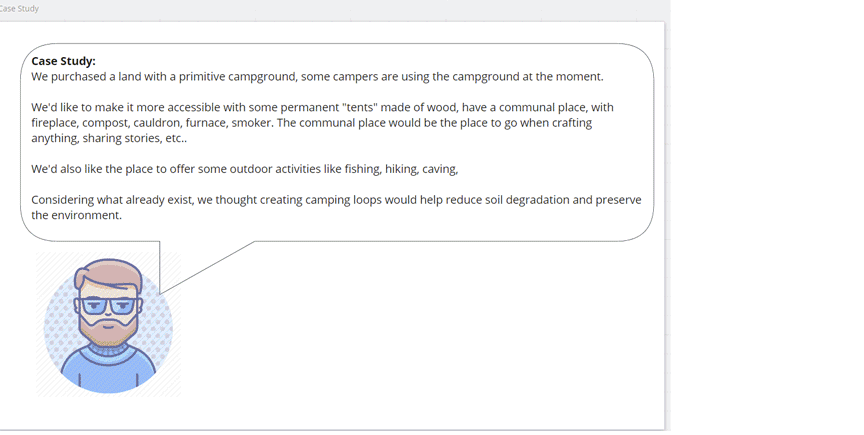
Facing the COVID-19 pandemic, we are all staying home for the safety of our people. This is a hard time for all of us. While classes are re-scheduled in the Fall, some of us Scrum trainers are refocusing our energy to help the household while others are investigating how to conduct interactive online training.
The speed at which the Scrum.org community of trainers arrived to discover, create, deliver, inspect and adapt the virtual environments to conduct the classes was overwhelming and very soothing at the same time. As a community, we’ve got this. We can support the world’s desire to learn and grow while providing outstanding Scrum classes online.
One day, I was managing the anxiety of my kids as we were wandering the unknown of a virtual world in the video game of Minecraft. We were playing in peaceful mode, without threats. The worst thing that could happen was getting lost, falling off a cliff and dying and losing all our equipment at the same time. Not a big deal for me but a great deal for them. In order to manage this anxiety, we agreed to be more transparent in the tasks that we were doing, asking for help or providing help when needed. I was setting some constraints here and there, to help them navigate the unknown and when they became skilled, I removed them, letting them loose.
All that to say, that night, while reflecting on this experience, I thought how fun it would be to use Minecraft and learn the dynamics of Scrum as a team.
And then I went online and stumble on the Education version of Minecraft. It is a special version of Minecraft used by thousands of teachers and trainers to convey their course content. It provides tools for teachers to create their own worlds and lessons.
This version is free to use until the end of June for people with an Office 365 Education account. It just happens I have a personal 365 account and it wasn’t hard to create a school out of it. (Correction: You don't need an Office 365 account to get started! You can register a free academic version of Office 365 (Office 365 A1) at https://signup.microsoft.com/)
And then the experiment began with a nice and tidy little community of practice composed of “fresh out of school software engineers”. Most of them were already fluid in Minecraft and didn’t need a tutorial while others had to learn it on the fly. The sessions varied from 1.5h - 2h in duration.
After a quick Scrum refresher, we went ahead and practiced the framework while building something, in a limited amount of time. Before the game, I would take a minute to demonstrate the basic skills needed to achieve the first Sprint Goal. It evolved to sending a tutorial to the attendees a week before the session.
Minecraft is great to learn the mechanics of Scrum: starting with Planning, Dailies, Reviews, Retro, with some good learning moments around Self-Organization, the importance of technical excellence and backlog management.
The groups less skillful in Minecraft, coming to the game with absolutely no gaming skills, thrown into the total unknown with little to hang on to, had great learning opportunities! Most of them achieved the Sprint Goals and used Scrum to improve their communication, their skillset and the product they built. Just like you would do at work, working on real things.
I invited my community of Scrum Trainers to experience this game and see if it would be a good way to convey our course content.
Of course, you would expect Professional Scrum Trainers an outstanding mastery when it comes to managing the unknown, self-organization, teamwork, inspection and adaptation… but… try to picture what happened during the first Sprint, based on these testimonials:
"... a very humbling experience, you can feel what students feel like during PSF (Professional Scrum Foundation) - PST getting lost, burned, trapped and not saying a word, also dropping Daily Scrum, Scrum Master..."
"... I felt like a hero, smashing blocks, forgetting about the goal, doing my thing until the end of the timebox where I realized what I was doing and not really helping..."
"… How do we know how much stuff can we build? We need a Sprint 0 ..." (Rest assured; we didn’t do a Sprint 0)
So it gave them perspective. Even Scrum experts, when thrown in a complex environment, may revert to old habits. Scrum helps you manage the unknowns thrown at you and learn along the way.
Playing a game together strengthens the relationships give you a feeling of proximity and you get to learn together. You can look at other peoples’ avatars working and/or wandering, getting lost or figuring things out. You can make plans, split the work, or do everything yourself. Mixed with a virtual classroom environment with real faces, real conversations, this platform can enable powerful learning moments.
Minecraft Education gives you access to a world of opportunities ensuring your learning objectives hit home. Here are a few ideas to explore:
- Learning not to gold plate features, like building stairs on a path up a hill.
- Building a visualization for a Product, as a team.
- Managing urgent tasks by summoning Zombies in the team’s area.
- Scaling Scrum while actually building something big with multiple Scrum teams
- Building a visualization of your perfect working environment.
- Simulating a sub-optimal working environment.
- Simulating sub-optimal behaviors in a team.
- Playing two roles at the same time. (SM and Dev)
- Exploring technical debt
- The importance of spending time exploring new technologies
- Attention to technical excellence
- Managing a Lack of Skills
- Managing Silos
Here’s a list of build challenges that you can use to craft your sessions.
https://education.minecraft.net/wp-content/uploads/Classroom-Build-Challenges.pdf
Look at the portfolio of the last session.

Happy Scrumming!
Simon
